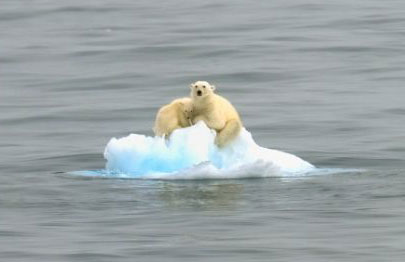
A new scientific analysis estimates the global cost of the melting Arctic, and it’s extremely terribad — $60 TRILLION bad. “Many experts now say that if recent trends continue and Arctic sea ice continues its ‘death spiral,’ we will see a ‘near ice-free Arctic in summer’ within a decade. That may well usher in a permanent change toward extreme, prolonged weather events ‘such as drought, flooding, cold spells and heat waves.'” So, hey, instead of working to address this multi-trillion dollar crisis before it hits, let’s just spend years and years and years sweating the deficit. Now, that’s leadership.
Update Per Mother Jones, the potentiality of such a methane bomb is in some dispute: “Bear in mind that there are many good reasons to be skeptical of a methane disaster — it is hardly a matter of scientific consensus that this is a real concern. And that stands in stark contrast to the issue of climate change in general, an issue on which scientists are overwhelmingly aligned (and where the solution remains incredibly obvious: cutting carbon emissions).”
